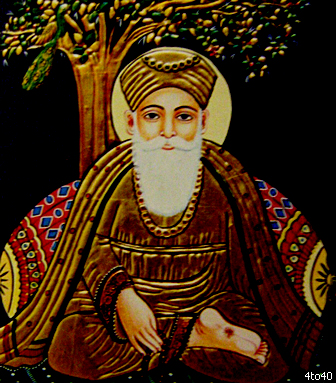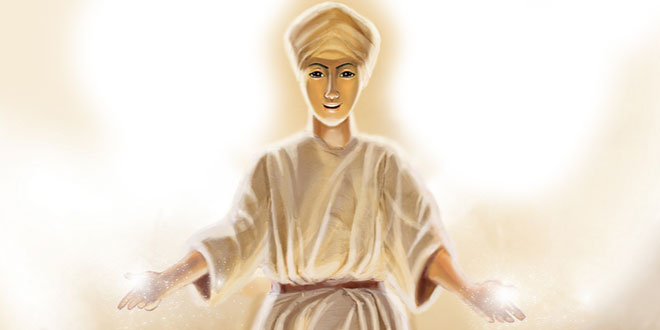-

Guru Nanak Guru Nanak, 1469-1539
- Guru Angad: born 1504, Guru 1539-1552
- Guru Amar Das: born 1479, Guru 1552-1574
- Guru Ram Das: born 1534, Guru 1574-1581
- Guru Arjan: born 1563, Guru 1581-1606
- Guru Hargobind: born 1595, Guru 1606-1644
- Guru Har Rai: born 1630, Guru 1644-1661
- Guru Har Krishan: born 1656, Guru 1661-1664
- Guru Teg Bahadur: born 1621, Guru 1664-1675
- Guru Gobind Singh: born 1666, Guru 1675-1708
The Gurus are not incarnations of God and they are not worshiped. They are, instead, simply held in very high esteem as especially enlightened spiritual guides. It is not unusual for Sikh holy places, Sikh homes and Sikh gurdwaras to have pictures of Gurus hanging on the walls. When Amar Das appointed his son, Ram Das, to be the next Guru, the position became hereditary and remained within the family.
Amar Das, the third guru, created missionary centers around India to spread the Sikh message. He had such popular respect among the people that the Mughal emperor Akbar visited him. Amar Das appointed his son-in-law, Ram Das, to succeed him, establishing a hereditary succession for the line of gurus. Amar also built a tank for water at Amritsar in Punjab, a city which became the holiest center of Sikhism.
The fifth Guru, Guru Arjan, became the first Sikh martyr when he was killed in 1606 because the Mughal emperor suspected the he was conspiring in a rebellion. Ironically, it was on the day which commemorates his martyrdom that the Indian Army attacked the Golden Temple in 1984. Arjan was responsible for designing the Golden Temple in the city of Amritsar.
Because of the martyrdom of his father Arjan, Guru Hargobind created a standing Sikh army to act in defense of the Sikh faithful. He also symbolically wore two swords, one which represented his spiritual power (pir) and another which represented his temporal power (mir). Hargobind also built the Akal Takht (“Throne of the Eternal God”) in front of the Golden Temple in Amritsar.
It is from here that the gurus would exercise temporal power, such as administering secular matters or dispensing justice in disputes among Sikhs. Hargobind’s unification of spiritual and temporal authority has created problems down through today.
The eighth Guru, Guru Har Krishan, was the youngest Guru ever. He took his position when he was just five years old and he died after only three years.
The ninth Guru, Teg Bahadur, was martyred in 1675 at the hands of the Moghul rulers when he opposed their efforts to forcibly convert Sikhs to Islam. Today that spot in Delhi has become an important gurdwara.
The tenth Guru, Gobind Singh, decided that there would be no more human Gurus. After him, that position would be filled jointly by the Adi Granth and the Panth, which is the community of Sikh faithful. The common perception among Sikhs today is that their scriptures are the guru while they merely protect its status.
Gobind also decided that the Sikhs would no longer be easy victims of those in power, whether Hindu or Muslim, so he created the Khalsa, a select group of Sikhs who undergo an initiation and must dedicate themselves to the defense of the oppressed at all times. Much of Gobind’s life was spent on the run, conducting a guerrilla campaign against the Mughal rulers of northern India.
Most of the Sikh gurus were good musicians who composed songs to communicate message to the people in a language which combined aspects of Punjabi with Hindi and Braj, not to mention some terminology from Arabic and Persian. Written in the Gurmukhi script, these songs are a primary source of the early Punjabi language and literature.
 Kids Portal For Parents India Kids Network
Kids Portal For Parents India Kids Network







